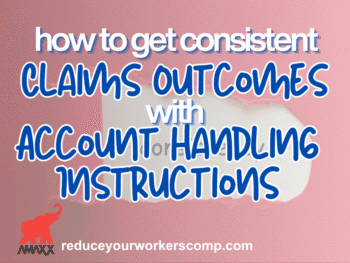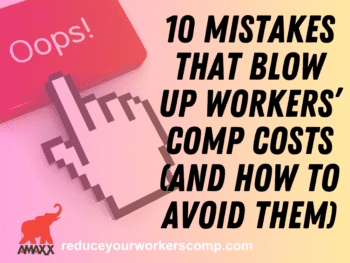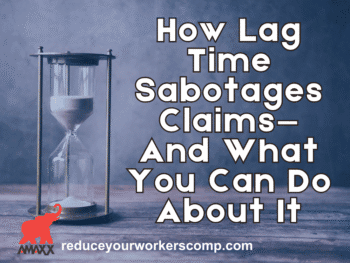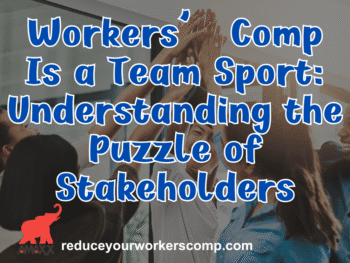A Story in Several Parts – 2 2) Corporate Structure The systemic way a company handles their work injuries is the most critical aspect of a solid workers’ compensation control process. The same process can, of course, be used for all absences in the workplace including short and long term disability. Who is responsible for work-related injury reporting and procedures at your company? Is that person familiar with risk management and workers’ compensation cost control? If not, they should attend conferences such as RIMS and the National Disability Conferences. They will need management support while they learn the ropes. The person responsible should have adequate resources to become familiar with the types of services available to companies to tightly control the injury process; this type of knowledge is gained through attendance at industry conferences where they attend seminars on point and also browse through the exhibit hall to see the range of services available to them. The person responsible for workplace injuries should receive at least one monthly newsletter or magazine to gain a broad understanding of the subject area. I’ve worked with several clients where the legal department was responsible for handling workers’ compensation claims yet counsel had not had the opportunity to learn risk management techniques. Having started in the risk management field as in-house counsel for a large international company, I learned about risk management by accident. Law schools do not normally teach risk management although the two fields are closely related and most lawyers do not know the field of risk management is a specialized occupation. Corporate personnel often do not ask to attend conferences or subscribe to publications because they do not know these tools exist – they don’t know what they don’t know! Your structure should fuse different departments into a workers’ comp team with one captain. The team leader should be a ‘get it done’ person who has a strong workers’ comp background. Determine which departments in your company deal with employee injury and absence. All relevant departments should report to the same executive, usually the CFO. There must be communication with all departments handling areas as safety, personnel/human resources, labor relations and the medical department. A good starting place for inter-departmental communication is a brainstorming session to discuss worker safety and injuries. Each department brings any written materials and forms they use for employee injuries and absences. The people responsible for WC must understand the operational side of their business. If they haven’t been out into the ‘field’ to see the actual operations, that is the first step – head out to see what your company does. While it sounds almost too simplistic to say this, it is an often overlooked step. (workersxzcompxzkit) It is important to have union buy-in so include the director of labor relations; important contract provisions may need to be changed during the next negotiation. Labor relations much coordinate closely with the risk management and medical departments, yet they may be unaware of the important role they play. Author: Rebecca Shafer, J.D. Rebecca is a cost containment consultant with over 20 years experience working with even the most challenged employers helping them implement workers’ compensation cost containment solutions. Whether the problem is unions, decentralized workforce or lack of management commitment, our team can help you overcome the challenges. We can be reached at RShafer@ReduceYourWorkersComp.com or 860-786-8286.
Reduce Your Workers Comp: www.ReduceYourWorkersComp.com/ WC Best Practices Quick Check: http://www.workerscompkit.com/intro/ (free quick score) WC Calculator: www.reduceyourworkerscomp.com/calculator.php Do not use this information without independent verification. All state laws vary.
©2008 Amaxx Risk Solutions, Inc. All rights reserved under International Copyright Law. If you would like permission to reprint this material, contact Info@WorkersCompKit.com














